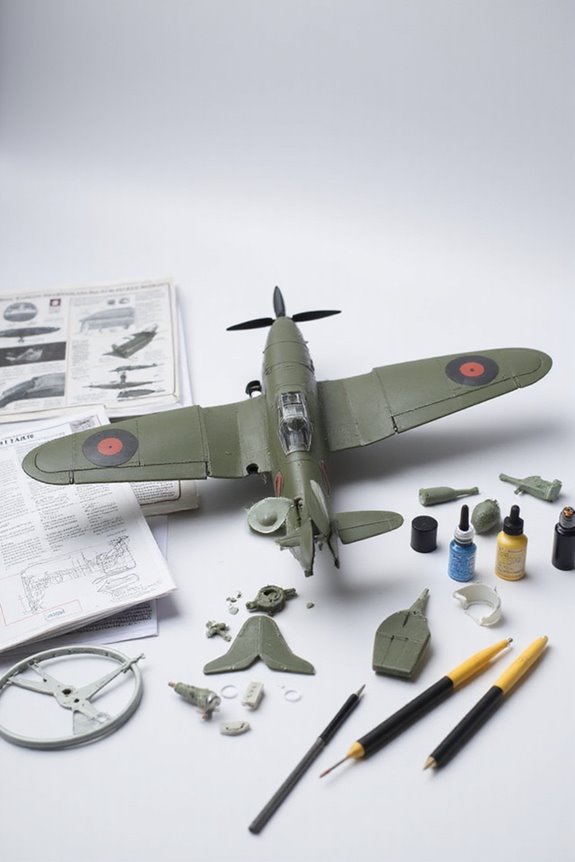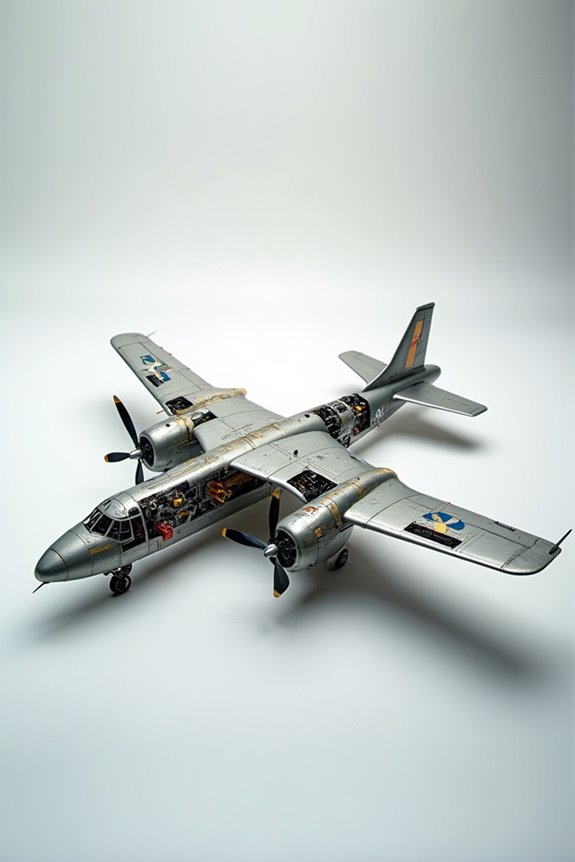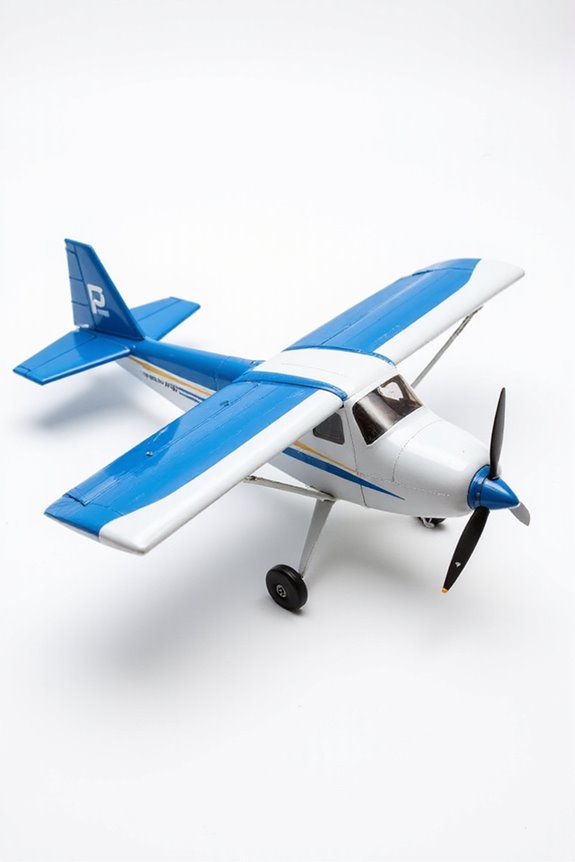To make model building accessible to all ages, we should create inclusive spaces that invite collaboration. Think about adjustable furniture and clear signs that help everyone navigate easily. It’s also key to choose model kits suited for different skill levels, like Entry Grade for beginners or Master Grade for experts. Plus, providing step-by-step, easy-to-follow instructions keeps the frustration at bay. If we keep these ideas in mind, we can build a fun community around our hobby! Curious about more ways to enhance our model-building sessions?
Key Takeaways
- Choose model kits of varying complexities, including Entry Grade (EG) and Super Deformed (SD) options for beginners.
- Design inclusive spaces with clear signage, adjustable furniture, and comfortable seating to accommodate all users.
- Provide accessible instructions using visual aids, simple language, and step-by-step breakdowns to support diverse learning styles.
- Incorporate adaptive tools and large, easy-to-handle parts to assist builders with different abilities, particularly those with fine motor challenges.
- Foster intergenerational collaboration through activities that encourage mentorship and social interaction among builders of all ages.
Designing Inclusive Spaces for Model Building
When we think about designing inclusive spaces for model building, it’s essential to remember that everyone should feel welcome, right? By creating collaborative spaces that encourage teamwork, we guarantee participation from all skill levels. Imagine a place where a child, a grandparent, and someone with a disability can all build together.
Incorporating sensory zones is key, too. These areas can offer quiet, calming environments for those needing a break from all the hustle and bustle. Clear signage, adjustable furniture, and wide aisles can make all the difference.
Let’s not forget to use non-glare surfaces and tactile cues for easy navigation. Ultimately, designing with diversity in mind means everyone can plunge into the fun of model building together!
Selecting the Right Model Kits for All Skill Levels
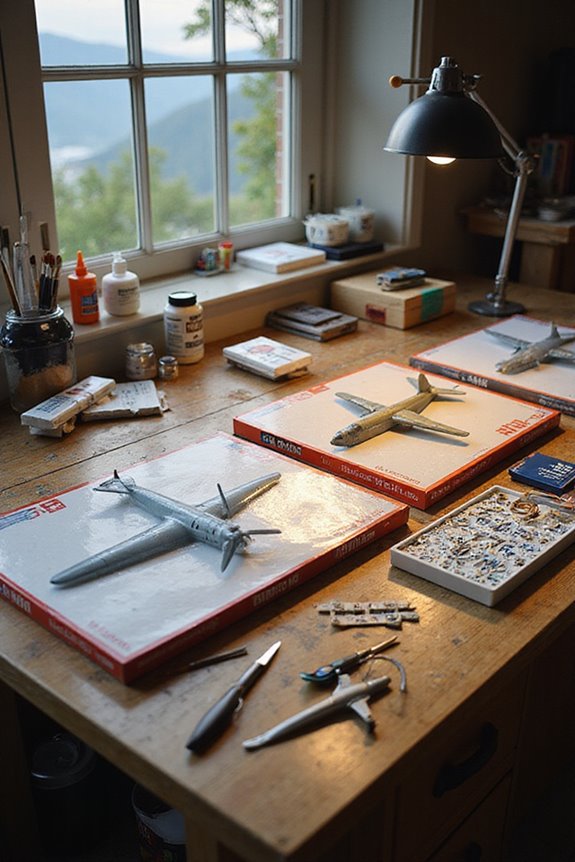
Selecting the right model kits can feel a bit like searching for a needle in a haystack, especially with all the options out there. To make it easier, we need to take into account model complexity and age suitability. For beginners or younger builders, Entry Grade (EG) and Super Deformed (SD) kits are perfect. They offer simple assembly without glue and have quick build times.
If we’re feeling adventurous, High Grade (HG) kits offer more detail without overwhelming us. For the experienced folks craving a challenge, Real Grade (RG), Master Grade (MG), or even Perfect Grade (PG) kits make us work for that satisfying finish. Adapting our choices guarantees everyone can enjoy the journey of building, no matter their skill level! Additionally, Dumas model airplane kits provide a diverse range of options that cater to various skill levels and ages, ensuring accessibility for all enthusiasts.
Supporting Varied Abilities Through Universal Design
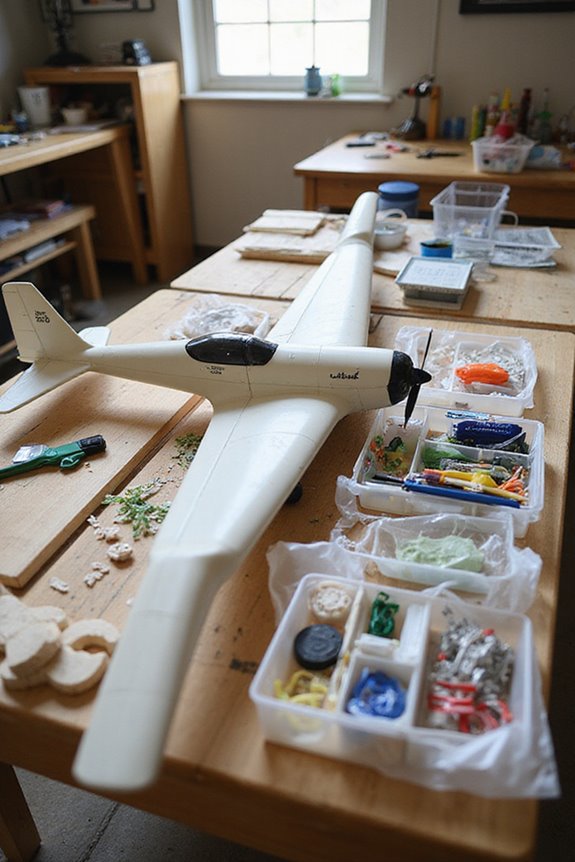
Crafting model kits isn’t just about the project; it’s also about who’s building them. To make model building accessible, we need to embrace universal design. This means incorporating adaptive tools that minimize strain and enhance comfort. Think large, easy-to-handle parts for those with fine motor skill challenges.
Sensory considerations are essential too. Tactile feedback helps users with sensory impairments identify parts easily. Plus, high-contrast colors and simple visual cues make models easier to navigate.
Let’s not forget adjustable components for different hand sizes. We’re fostering creativity while providing options for varied skill levels. With these strategies, we’re opening doors for everyone to join in the fun of building! After all, who doesn’t love a good model kit?
Providing Accessible and Clear Instructions
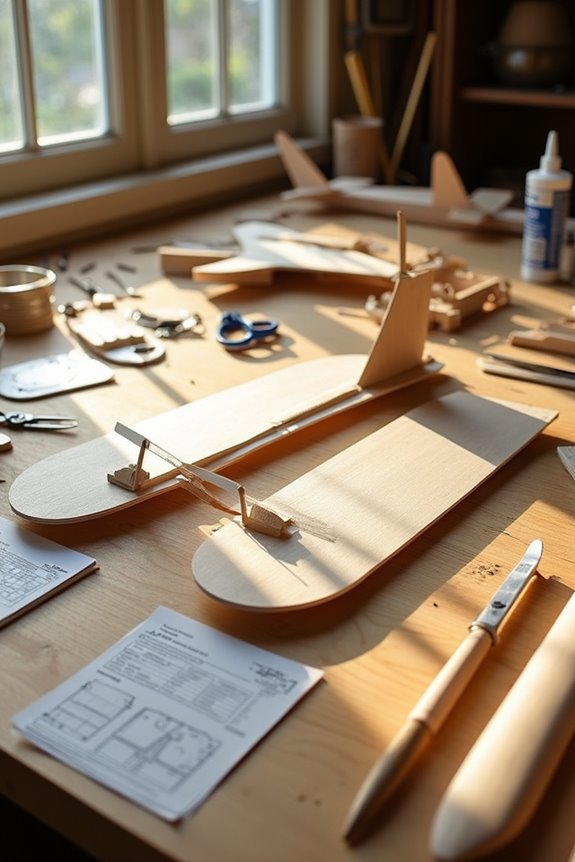
Providing clear instructions is essential to making model building enjoyable for everyone. We can start by using visual aids, which help clarify complex steps. Think of them as road signs guiding us along the building journey.
A step breakdown is vital too. Breaking tasks into manageable pieces prevents confusion—nobody likes assembling a model that feels like a puzzle missing half its pieces!
We can avoid technical jargon and keep language simple. Using bullet points or numbered lists makes following along easier, like following a recipe. And don’t forget to use various formats like videos or diagrams; they cater to different learning styles. Incorporating support resources such as video tutorials can further enhance the building experience for beginners.
Creating Engaging Social Environments for All Ages

When we think about creating engaging social environments for model building, it’s essential to remember that everyone, regardless of age, has something unique to offer. We can set the stage for fun by designing spaces that encourage intergenerational activities. Imagine seasoned builders mentoring young enthusiasts during collaborative challenges. It’s like a picnic where everyone brings their favorite dish!
Flexible areas allow small groups to brainstorm and larger gatherings for show-and-tell. We can use cool visual displays of models to spark conversations. Plus, don’t forget comfy seating and good lighting—no one wants to squint while crafting! By creating informal break zones, we foster friendships naturally, ensuring every builder feels welcomed. Let’s make our model-building community thrive together! Additionally, incorporating elements of technology features can enhance the overall experience and engagement for all ages.
Integrating Technology for Enhanced Accessibility
Integrating technology into model building can open up a world of possibilities for everyone involved. By using assistive technologies like voice-to-text and screen readers, we can create an inclusive environment. Imagine a model-building setup where everyone can participate, regardless of age or ability!
Digital content also plays a vital role. Accessible online platforms can improve engagement by offering various formats. This means English language learners or those with disabilities might actually enjoy building their models more than ever.
Flexible options for demonstrating skills keep things fun and invite creativity. We’re not just leveling the playing field; we’re providing a vibrant playground for all. So, let’s embrace technology to guarantee everyone, young or old, can immerse themselves in the fascinating world of model building!
Ensuring Continuous Feedback and Adaptation in Model Building Programs
To really make our model building programs shine, we’ve got to guarantee continuous feedback and adaptation. Think of feedback cycles as our GPS for success. We need clear goals and regular check-ins to help everyone stay on track. You know, it’s like checking your map before a road trip—super helpful!
Frequently Asked Questions
What Are the Best Sources for Purchasing Accessible Model Kits?
When searching for accessible model kits, we’ve stumbled across treasure troves online like MegaHobby.com and specialty shops like HobbyTown. They offer a variety of kits that spark creativity and can suit any skill level!
How Can Parents Support Children With Disabilities in Model Building?
To support our children with disabilities in model building, we can utilize adaptive tools and sensory materials. This approach enhances engagement, encourages creativity, and fosters collaboration, ensuring every child feels included and empowered during the experience.
Are There Any Organizations Focused on Accessible Model Building Initiatives?
In a world where everyone deserves to build their dreams, organizations embrace inclusive design and adaptive tools for accessible model building. Together, we can empower creativity, ensuring no one is left behind in this vibrant journey.
How to Introduce Model Building to Individuals With No Prior Experience?
To introduce model building, we can start with beginner kits and utilize instructional videos. These resources help demystify the process, making it enjoyable and approachable for anyone keen to try their hand at modeling.
What Tips Can Enhance Motivation for Individuals Hesitant to Try Model Building?
Let’s explore encouragement strategies together! Utilizing beginner resources can help ease anxiety. By joining supportive communities and celebrating small wins, we’ll find motivation and joy in our model building journey, making it an enjoyable experience.

